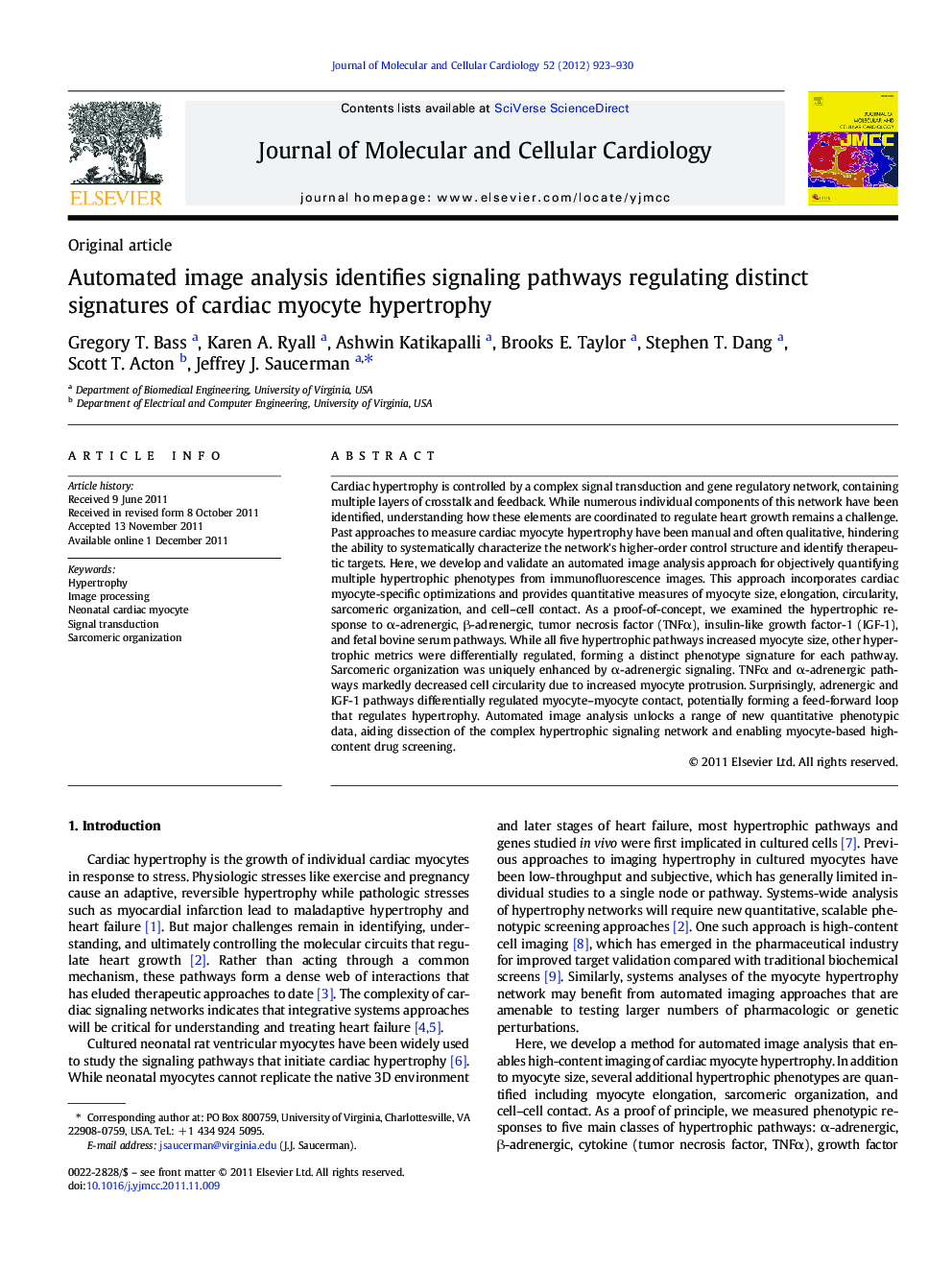| Article ID | Journal | Published Year | Pages | File Type |
|---|---|---|---|---|
| 2190673 | Journal of Molecular and Cellular Cardiology | 2012 | 8 Pages |
Cardiac hypertrophy is controlled by a complex signal transduction and gene regulatory network, containing multiple layers of crosstalk and feedback. While numerous individual components of this network have been identified, understanding how these elements are coordinated to regulate heart growth remains a challenge. Past approaches to measure cardiac myocyte hypertrophy have been manual and often qualitative, hindering the ability to systematically characterize the network's higher-order control structure and identify therapeutic targets. Here, we develop and validate an automated image analysis approach for objectively quantifying multiple hypertrophic phenotypes from immunofluorescence images. This approach incorporates cardiac myocyte-specific optimizations and provides quantitative measures of myocyte size, elongation, circularity, sarcomeric organization, and cell–cell contact. As a proof-of-concept, we examined the hypertrophic response to α-adrenergic, β-adrenergic, tumor necrosis factor (TNFα), insulin-like growth factor-1 (IGF-1), and fetal bovine serum pathways. While all five hypertrophic pathways increased myocyte size, other hypertrophic metrics were differentially regulated, forming a distinct phenotype signature for each pathway. Sarcomeric organization was uniquely enhanced by α-adrenergic signaling. TNFα and α-adrenergic pathways markedly decreased cell circularity due to increased myocyte protrusion. Surprisingly, adrenergic and IGF-1 pathways differentially regulated myocyte–myocyte contact, potentially forming a feed-forward loop that regulates hypertrophy. Automated image analysis unlocks a range of new quantitative phenotypic data, aiding dissection of the complex hypertrophic signaling network and enabling myocyte-based high-content drug screening.
► Automated image analysis method for cardiac myocyte hypertrophy. ► New quantitative measure of sarcomeric organization. ► TNFα and α-adrenergic signaling have opposite effects on myocyte elongation. ► Sarcomeric organization is uniquely enhanced by α-adrenergic signaling. ► α- and β-adrenergic pathways enhance myocyte–myocyte contact.
